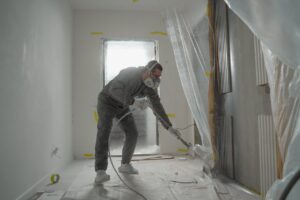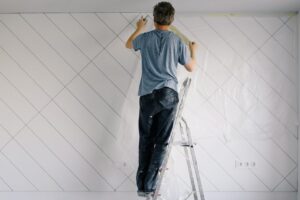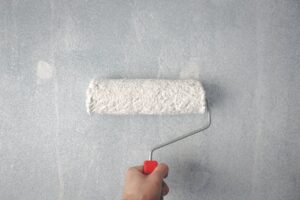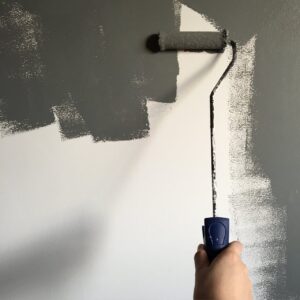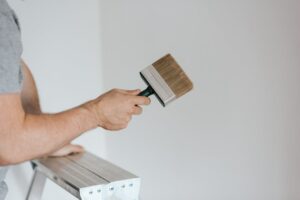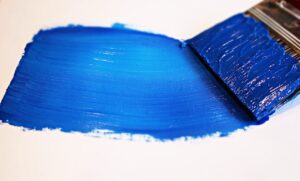
Avoid These Common Mistakes When Pairing A Painter With An Interior Designer
Collaboration between a painter and an interior designer is crucial for achieving stunning results. However, overlooking the importance of this partnership can lead to unsatisfactory outcomes that fall short of your vision. To ensure a successful collaboration, it’s essential to avoid common mistakes in pairing these two professionals. By doing so, you can unlock the full potential of your home’s interior design and create a harmonious blend of colors, textures, and aesthetics. By avoiding these common pitfalls, you can maximize the benefits of this collaboration and achieve remarkable results that reflect your unique style and personality. Key Considerations For Successful Pairing: Natural Light, Room Position, And Lighting To ensure a successful pairing between a painter and an interior designer, there are several key considerations to keep in mind. These include the impact of natural light on paint colors and overall ambiance, considering room position when choosing paint colors and lighting schemes, as well as the importance of proper lighting to enhance the painted space effectively. The Impact Of Natural Light On Paint Colors And Overall Ambiance Natural light has a significant influence on how paint colors appear in a room. It can alter the perception of color, making it essential to consider how different shades will look under various lighting conditions. For example, rooms with ample natural light tend to make cool colors like blues appear more vibrant, while warm colors like reds may seem subdued. Understanding these nuances helps create the desired atmosphere in a space. Considering Room Position When Choosing Paint Colors And Lighting Schemes The position of a room within a home also plays a crucial role in selecting appropriate paint colors and lighting schemes. Rooms that face north generally receive less direct sunlight throughout the day, which can make them feel colder or darker. In contrast, south-facing rooms often enjoy more natural light and warmth. By taking into account these factors during the planning stage, painters and interior designers can choose colors that complement each room’s unique characteristics. Importance Of Proper Lighting To Enhance The Painted Space Effectively Lighting is an essential element in any interior design project as it can dramatically impact how colors are perceived within a space. Adequate lighting ensures that the true beauty of painted walls is showcased while creating an inviting atmosphere. Properly placed fixtures can highlight architectural features or artwork while providing functional illumination for daily activities. Considering these key factors – natural light, room position, and lighting – contributes to a harmonious painter-interior designer pairing by ensuring that color choices align with both practicality and aesthetics. Avoiding Insufficient Lighting And Paint Quantity Pitfalls Insufficient lighting and inadequate paint application can have a significant impact on the overall look and feel of your painted spaces. It’s important to avoid these common mistakes when pairing a painter with an interior designer to ensure optimal results. Negative Effects Of Insufficient Lighting Insufficient lighting can make even the most well-painted room appear dull and uninviting. Shadows may be cast on certain areas, making it difficult to fully appreciate the color and texture of the walls. Natural light plays a crucial role in showcasing the true beauty of paint colors, so it’s essential to consider this when selecting shades for your space. Ensuring Adequate Paint Quantity To achieve seamless coverage and color consistency, it’s crucial to use the right amount of paint. Applying too little paint can result in patchy areas or uneven color distribution. On the other hand, using too much paint can lead to drips, streaks, or an overly thick layer that takes longer to dry. Common Mistakes Leading To Poor Lighting Or Inadequate Paint Application Neglecting to measure the area properly before purchasing paint. Failing to account for multiple coats needed for darker shades. Not considering undertones when selecting colors. Using low-quality brushes or rollers that leave streaks or bristle marks. Skipping primer application, which affects paint adhesion and coverage. Tips For Avoiding Pitfalls Measure your walls accurately before buying paint to ensure you have plenty for complete coverage. Consider natural and artificial lighting conditions in your space when choosing colors. Test samples on your walls beforehand to see how they appear under different lighting conditions. Invest in high-quality brushes and rollers for smooth application. Apply primer before painting for better adhesion and consistent coverage. By avoiding these common mistakes, you can ensure that your painter and interior designer collaboration results in a beautifully painted space with optimal lighting. Remember, attention to detail and careful planning can make all the difference! Steer Clear Of DIY Overload And Overmatching Attempting complex painting projects without professional assistance can be a risky endeavor. Without the expertise of a painter, you may find yourself facing numerous challenges along the way. One common mistake to avoid is overmatching paint colors with existing elements in your space. While it may seem like a good idea to have everything perfectly coordinated, this can actually create a monotonous and uninspiring atmosphere. DIY overload is another pitfall to steer clear of. Taking on too much at once can lead to subpar results or unnecessary expenses. It’s important to recognize when it’s time to call in the professionals – both painters and interior designers – to ensure your project turns out just right. To avoid these mistakes, consider working closely with a painter and an interior designer who can offer their expertise and guidance throughout the process. Here are some tips: Don’t Overmatch Paint Colors Take into account the undertones of existing elements in your space. Use color swatches or paint samples to compare shades before making a decision. Experiment with different combinations to find what works best for your aesthetic. Avoid DIY Overload Recognize when a project requires professional help. Focus on one aspect at a time rather than trying to tackle everything simultaneously. Read up on tutorials or seek advice from experts before diving into any major tasks. By collaborating with professionals, you can ensure that your painting project goes smoothly and achieves the desired outcome. Their knowledge

